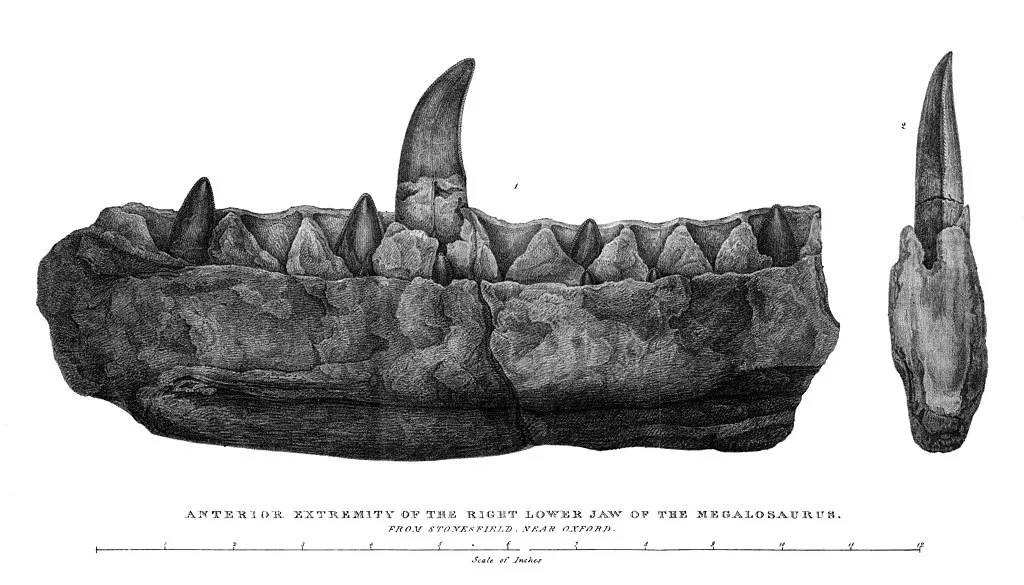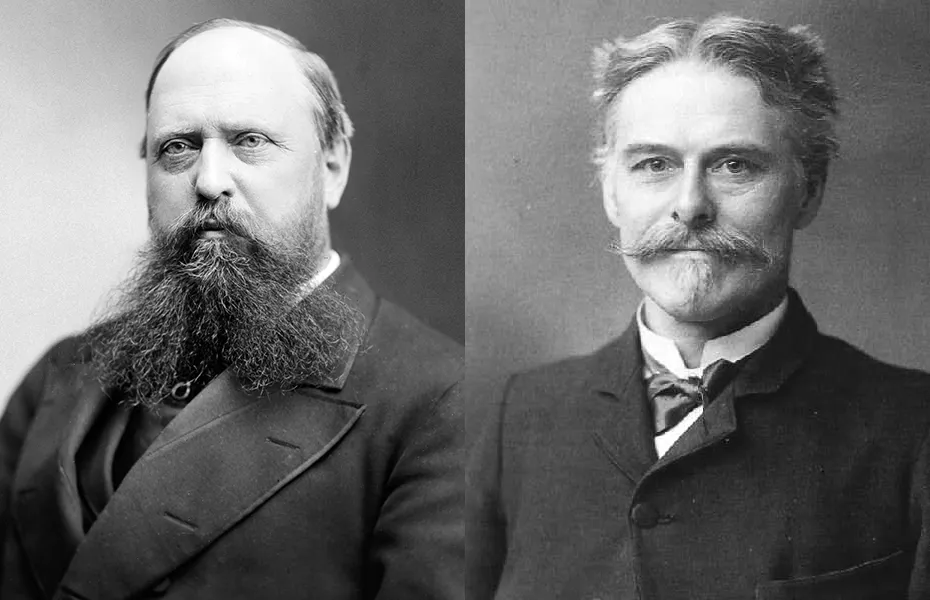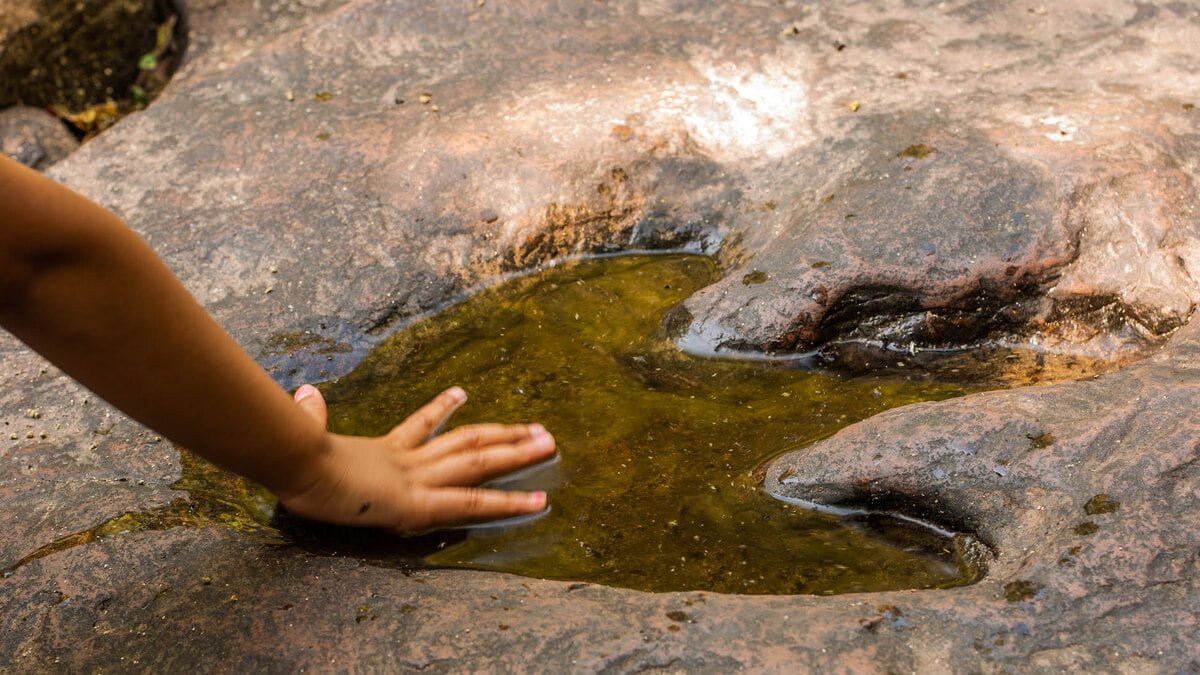Most of us know that humans and dinosaurs did not coexist. So when did people first know about dinosaurs?
2024 marks 200 years since the first dinosaur was described. That sounds kind of late given how long our species has been around. Why were dinosaurs discovered so late?
Dinosaurs were first scientifically recognized in the early 19th century. William Buckland described the first dinosaur fossil, Megalosaurus, in 1824. This was followed by Gideon Mantell’s discovery of Iguanodon in 1825. Sir Richard Owen coined the term “dinosaur” in 1842, marking the formal recognition of these ancient reptiles.
Keep reading and we’ll get to why it took so long to formally recognize dinosaurs and how we may never know who discovered the first dinosaur fossils.
When Did People Know Dinosaurs Existed?
Fossils have been found all over the world for as long as humans have been around. These finds have brought curiosity and wonder and inspired fantastical tales.
You’re probably wondering when we begin to understand the origins of these fossils. While our knowledge of dinosaurs as a group is fairly recent, many theories emerged over the years.
I’ve provided a quick reference table that summarizes some of these theories that we’ll explore in greater detail later.
| Culture/Period | Interpretation of Fossil Bones |
|---|---|
| Ancient Greeks/Romans | Remains of giants, heroes, or mythical monsters from legends |
| Medieval Europeans | Remains of creatures killed in the Biblical Great Flood, or associated with dragons |
| Native Americans | Varied by tribe – some saw them as remains of ancient, monstrous creatures |
| Ancient Chinese (4th century BCE) | Remains of fabled dragon-like creatures called “riu” |
| Renaissance Europeans | Objects of curiosity and wonder, but little scientific understanding |
| 16th-18th Century Natural Philosophers | Most thought they may be remains of unknown, extinct species |
| 19th Century (pre-1842) | Increasingly identified as reptilian creatures, but dinosaur concept not yet defined |
It’s important to remember that without records, there is no true accounting of what fossils were known to these civilizations. We can only infer based on limited historical documentation and legends.
It wasn’t until the explosion of paleontology that people remotely understood that dinosaurs once roamed. Even still, our understanding was only rudimentary at the time.
When Was the First Dinosaur Fossil Discovered?
Indigenous peoples all over the world were likely aware of dinosaur fossils for a long time. Fossil shells, bones, and plants have been carved or used for jewelry for thousands of years.
In Australia, the Aboriginal Dreamtime stories tell of the ‘emu-man’ Marala who left behind huge three-toed footprints as he walked. The Sioux in North America referred to fossils of large animals as ‘thunder beasts’—monsters that had been killed by thunder spirits.
This would later inspire names like Brontosaurus (thunder lizard) and Brontotherium (thunder beast). Check out this article from Popular Mechanics which covers more on the connection of the thunder beasts to the Sioux nation.
The truly scientific studies of dinosaurs didn’t happen until the 17th century. The first true dinosaur is usually listed as Megalosaurus.
This carnivorous theropod was found in the United Kingdom and dates back to the Middle Jurassic. The first fossils were a tooth found in 1699 and a piece of a thigh bone found in 1676.

It wasn’t called Megalosaurus until William Buckland found a jawbone in 1824 and named the species. The earlier fossils were recognized as being Megalosaurus many decades after their discovery.
The next dinosaur would not be found until the 19th century when Iguanodon was uncovered in the UK. It got its name from having similar teeth to iguanas.
It was discovered in 1822, over 100 years after the first Megalosaurus, but got its name in the same year of 1824.
Soon after, Hylaeosaurus was discovered in 1832 in the UK as well. Unlike the first two, it was several bones from a partially complete skeleton.
Who Named Dinosaurs?
In 1841, the English paleontologist Sir Richard Owen delivered a lecture to the British Association for the Advancement of Science describing these three animals. He suggested that they were something new because of their unique leg positions and the high metabolism needed for reptiles that size.

Owen created the name Dinosauria to describe their appearance and reptilian nature. The Greek words deinos and sauros mean fearful and lizard. Close enough for the time.
Owen used the word ‘fearful’ to describe their huge size and majesty, but it is also a good description of their claws, teeth, and horns. He published this lecture in 1842 and the name soon caught on with the general public.
In another article, we cover the significance of these discoveries as conveyed by popular media. When you finish here, go read our article on dinosaurs in media to learn more about this link.
What Did They Call Dinosaurs Before 1841?
Once these fossils began to be studied in the 17th century and later, they were usually described as ‘giant lizards’ or an ‘animal from the Lizard Tribe of enormous magnitude.’ This is exactly what gives Megalosaurus its name.
It comes from the Greek words megas meaning large and sauros meaning lizard. Pretty creative, right?
The guys at the DangerVille channel have covered a few wild theories of early scientists who studied dinosaur bones. While we can’t be too hard on these scientists, it’s hard not to chuckle a bit.
Before that, the fossils had been called everything from elephants to biblical creatures to giant humans. Early scientists called the thigh bone from Megalosaurus a Roman war elephant bone. They later decided it had belonged to a legendary Titan-like human.
Now we know it is a dinosaur! How many other creatures of folklore do you know of that could have been prehistoric creatures?
Were Dragons Dinosaurs?
It’s easy to think that dragons and dinosaurs are related. After all, they usually look very similar.
Both are giant reptilians from long ago that have inspired stories throughout history. Were dragons based on dinosaurs?
Dragons and dragon bones have been referenced in ancient Chinese culture and medicine for thousands of years. However, dragon bones could be any of the abundant fossils found across China.
This video from the Extra History YouTube channel has a great overview of the history of dragons and their origins. It covers a lot in less than 8 minutes.
The apothecaries would later be helpful to scientists studying prehistory by showing them places where fossils had been found. Many of the earliest ‘dragon skulls’ were remains of ancient mammals found in caves across Eurasia. Perhaps this led to the common belief that dragons lived in caves.
In the 13th century in Klagenfurt, Austria, stories of a terrifying lindwurm (a type of serpent-like dragon) began to spread. This dragon threatened travelers and destroyed bridge crossings and a reward was put out to anyone who could slay it.
In the 14th century, the dragon’s skull was supposedly found and put on display in a museum. A fountain sculpture of the lindwurm was later built in the 16th century but it wasn’t until the 18th century that paleontologists realized this skull belonged to a woolly rhinoceros.
While dragons may not have been directly related to dinosaurs, they are not completely unrelated to paleontology. Paleontologists still pay tribute to the legends of dragons when naming new species.
Below is a list of dinosaurs named after dragons (draco in Greek and Latin or lóng in Chinese) and their name meanings.
| Dinosaur Name | Meaning | Year Described |
|---|---|---|
| Dracopelta | Dragon Shield | 1980 |
| Draconyx | Dragon Claw | 2001 |
| Dilong | Emperor Dragon | 2004 |
| Dracovenator | Dragon Hunter | 2005 |
| Dracorex (Pachycephalosaurus?) | Dragon King | 2006 |
| Guanlong | Crown Dragon | 2006 |
| Yinlong | Hidden Dragon | 2006 |
| Pantydraco (Thecodontosaurus?) | Dragon of Pant-y-ffynnon | 2007 |
| Qiaowanlong | Qiaowan Dragon | 2009 |
| Hippodraco | River Dragon | 2010 |
| Huangshanlong | Huangshan Dragon | 2014 |
| Zhenyuanlong | Zhenyuan’s Dragon | 2015 |
| Dracoraptor | Dragon Thief | 2016 |
Early Paleontology
Early civilizations, such as 5th century Greeks, wrote down their observations and tried to solve the puzzles of these mysterious finds. The term ‘paleontology’ was not created until the 19th century just as the first dinosaurs were being discovered.
Paleontology was still a relatively new science in the early-to-mid 1800s. Major early contributors included:
- Georges Cuvier – Established extinction was real based on fossil evidence
- Gideon Mantell – Discovered and named first fossils of Iguanodon
- Richard Owen – Coined the term “dinosauria” in 1842
- Joseph Leidy – One of the great American paleontologists pre-dating Cope and Marsh
However, most early work was limited to fragmentary fossils from Europe. The rich fossil beds of the American West remained largely untapped until explored during the Bone Wars period.
The Bone Wars
The excitement over these new creatures led to the famous Bone Wars in the United States. The Bone Wars were a race between Othniel Charles Marsh and Edward Drinker Cope to outdo each other in the discovery of these dinosaurs.
Edward Drinker Cope (1840-1897) was an American paleontologist and anatomist. He was a professor at Haverford College and later the University of Pennsylvania. Othniel Charles Marsh (1831-1899) was an American paleontologist who worked as a professor at Yale University.

Both were obsessed with finding and describing new dinosaur fossils in the American West during the late 1800s. Their bitter professional and personal rivalry led them to unscrupulous tactics like:
- Poaching each other’s dig sites
- Destroying/hoarding fossils to deny rivals access
- Name-calling and public smear campaigns
- Attempts to cut off each other’s funding sources
Despite their unseemly feud, Cope and Marsh’s fossil hunting substantially increased knowledge about prehistoric life. Between them, they discovered and named over 130 new dinosaur species from the rocks of the American West.
These discoveries included dinosaurs and other reptiles, amphibians, and early mammals. The rivalry between the two paleontologists led to a diverse array of fossil discoveries, although many of these were later reclassified or deemed invalid due to the rushed and competitive nature of their work.
Our understanding of dinosaurs did not change much, besides the descriptions of new species, until the 20th century. This is when research about the relationships between dinosaurs and their evolution began to be asked and answered.
Why Were Dinosaurs Discovered So Late Given the Fossil Record?
While it seems absurd to think that we’ve only known of dinosaurs for 200 years, it makes sense. Scientists have only come to accept the concept of an ancient earth in the past couple of centuries. I covered this in another article that discusses why the geologic time scale is important.
Before the 1800s, dinosaur bones were considered to be those of anything from giants, elephants, dragons, or mythical beasts. Various cultures may have assumed the fossils that they uncovered were creatures from their local folklore.
The proliferation of paleontology has helped us to finally piece together the details of these magnificent creatures. While we seemingly know a lot today, scientists from the future will look back on us just as we do the pioneers of dinosaur exploration.
Did you learn something new? If so, share this article with someone you know. If you have something to add or want to suggest a follow-up topic, please leave a comment below.

